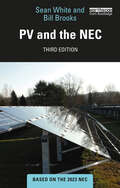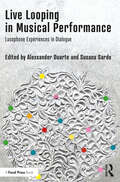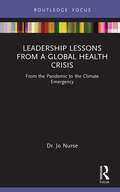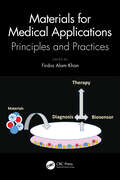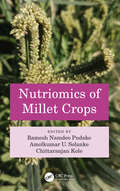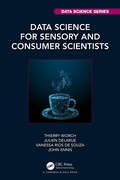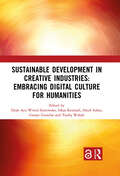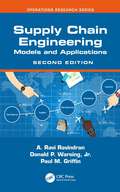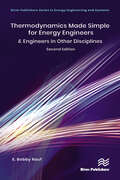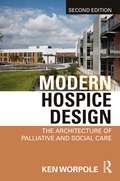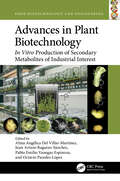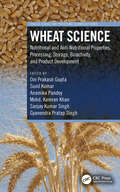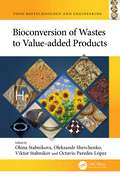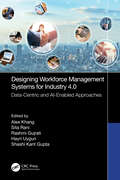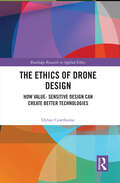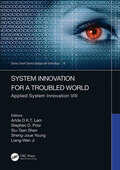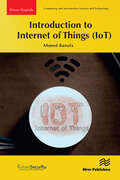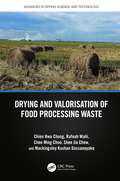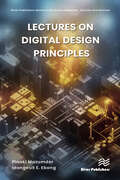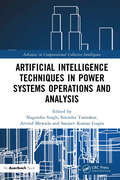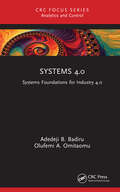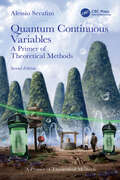- Table View
- List View
PV and the NEC
by Bill Brooks Sean WhitePV and the NEC presents a straightforward explanation of the National Electrical Code (NEC) in everyday language. Used throughout the United States and many other countries, the NEC is the world’s most detailed set of electrical codes pertaining to photovoltaic (PV) systems. This new edition is based on the 2023 NEC, with most of the interpretations and material staying true long after. It interprets the distinct differences between previous versions of the NEC and the 2023 NEC and clarifies how these code changes relate specifically to PV installations. It includes Energy Storage Systems (ESS) and EV to Grid (EV2G). Written by two of the leading authorities and educators in the field, this book will be a vital resource for solar professionals, as well as anyone preparing for a solar certification exam.
Live Looping in Musical Performance: Lusophone Experiences in Dialogue
by Alexsander Duarte Susana SardoLive Looping in Musical Performance offers a diverse range of interdisciplinary perspectives on the application of live looping technology by lusophone performers and composers. This book explores various aspects, including the aesthetic component, instrumentation, and setup, highlighting the versatility of this technology in music-making. Written by musicians and researchers from Portuguese-speaking countries, this book comprises eleven chapters that delve into various musical contexts, genres, and practices. The novelty of including collaborative texts written alongside non-professional researchers offers the possibility of drawing from real experience to consider how live looping has been changing and "cyborguising" the concept of music, the ritual of the performance, the identity of the musicians, and the public's expectations. Live Looping in Musical Performance provides cutting-edge reading for composers and performers, as well as ethnomusicologists, students, and researchers working in the areas of music production, technology, and performance. This book addresses a broader audience, both academic and non-academic, who are interested in new processes of musical creativity in a post-human world.
Leadership Lessons from a Global Health Crisis: From the Pandemic to the Climate Emergency (Routledge Focus on Environmental Health)
by Jo NurseThis book explores the key learning for global leadership in the face of modern international health crises and argues the need for fundamental reform to governance paradigms, within the global security sphere and policymaking circles. Beginning with an analysis of the worldwide response to the COVID-19 pandemic, the book provides insights from evolution, history, and human behaviour to explain how our current leadership paradigms have contributed to today’s global health challenges, and draws lessons for the much larger crisis of climate change with the threat of massive biodiversity collapse. The second part of the book outlines tangible solutions to transform leadership and policy to enhance global security for both People and the Planet, with the aim of averting future Pandemics and our Planetary Emergency. This book: Will be among the first published works to examine the international response to the COVID-19 pandemic, and draws valuable lessons for our Climate Crisis. Directly addresses the nexus between scientific advice and policymaking, highlighting its need for remedial action in the wake of 2020 global health crises. Provides a bridge between public health, the environment and leadership. This book will prove an insightful resource for current and future world leaders, politicians and policymakers, as well as Environmental and Public Health professional bodies, think tanks and institutions shaping the next generation of leadership.
Materials for Medical Applications: Principles and Practices
by Firdos Alam KhanThis book discusses advanced knowledge about the synthesis and application of materials in the medical field for diagnostic and therapeutic conditions. These materials have been extensively used in various biological and medical applications, especially in drug delivery, tumor screening, bioimaging, diagnosis, and therapies. Materials for Medical Applications provides comprehensive but concise information about materials and their medical applications. The readers will get information about the trends in materials and their medical applications, as well as current material-based products that are used in the medical field. The book has 11 chapters, where shapes, sizes, and structural differences of materials and methods of synthesis have been described, and a few chapters are also dedicated to the characterization of materials and their medical applications. The book also discusses how materials are tested in research laboratories, preclinical (animal) trials, and clinical (human) trials, and how material-based products go through various regulatory and safety phases before reaching patients. It also discusses topics such as materials delivery, imaging, and treatments for various diseases. It includes a chapter dedicated to regulatory guidelines and policies in the application of nanomaterials and will include current clinical trial information on the materials. Finally, the book has topics such as health safety, toxicity, dosages, and long-term implications of materials. This book is intended for researchers, material scientists, and students in bioengineering, biomedical engineering, and biopharmaceuticals working on the development of biomaterials.
Nutriomics of Millet Crops
by Chittaranjan Kole Ramesh Namdeo Pudake Amolkumar U. SolankeMillets are popularly known as “nutri-cereals” due to their high calcium, dietary fiber, polyphenol, vitamins, and protein content. Millet crops have the potential to aid in food security efforts in regions where natural and manmade causes are deteriorating land resources. Nutriomics of Millet Crops emphasizes the importance of nutriomics of millet crops in the context of universal health, highlighting biotechnological advancements offering enrichment of the nutritional value of millets. Millet crops have the potential to be a staple crop, demonstrating an economically feasible approach to combat micronutrient malnutrition. Features: Presents comprehensive studies on health-promoting nutritional components of millets. Provides enumeration on molecular breeding strategies for improvement of millet nutraceuticals. Discusses genomics-assisted breeding for enhancement of nutritional quality in millets. Includes information related to sensory and biofortification of millet-based foods. By assessing the relevance of millets in sustainable global agro-ecosystems due to their nutritional and agronomic attributes, the United Nations celebrated 2023 as the “International Year of Millets.” This book complements this effort and is useful to researchers and policy planners working across the disciplines of plant breeding and food technology. Nutriomics of Millet Crops also encourages young researchers to explore this promising field.
Data Science for Sensory and Consumer Scientists (Chapman & Hall/CRC Data Science Series)
by John Ennis Thierry Worch Julien Delarue Vanessa Rios De SouzaData Science for Sensory and Consumer Scientists is a comprehensive textbook that provides a practical guide to using data science in the field of sensory and consumer science through real-world applications. It covers key topics including data manipulation, preparation, visualization, and analysis, as well as automated reporting, machine learning, text analysis, and dashboard creation. Written by leading experts in the field, this book is an essential resource for anyone looking to master the tools and techniques of data science and apply them to the study of consumer behavior and sensory-led product development. Whether you are a seasoned professional or a student just starting out, this book is the ideal guide to using data science to drive insights and inform decision-making in the sensory and consumer sciences. Key Features: • Elucidation of data scientific workflow. • Introduction to reproducible research. • In-depth coverage of data-scientific topics germane to sensory and consumer science. • Examples based in industrial practice used throughout the book
Sustainable Development in Creative Industries: PROCEEDINGS OF THE 9TH BANDUNG CREATIVE MOVEMENT INTERNATIONAL CONFERENCE ON CREATIVE INDUSTRIES (BCM 2022), BANDUNG, INDONESIA, 1 SEPTEMBER 2022
by Idhar Resmadi Hanif Azhar Ganjar Gumilar Taufiq Wahab Wiwid Sintowoko, Dyah AyuThis book provides the thoughtful writings of a selection of authors illustrating a central concept: Sustainable Development in Creative Industries, which utilizes a monetary equilibrium addressing issues, particularly those associated with the use of an integrated area in cyberspace and physical space, and their effect on the creative industries. 15 universities from Asia and Europe have participated in the 9th Bandung Creative Movement, where this topic was explored. Sustainability issues are now at the forefront of progress. The book covers four main areas. The first section, entitled "Art, Culture, and Society," delves into the various sectors that contribute to building a more sustainable environment, including the arts and culture. Whereas, "Design and Architecture" is referring to cutting-edge practices in the fields of manufacturing, transportation, interior design, and building construction. The third section "Technology and New Media" delves into the transformation of technology into a new medium for the development of the creative industries. The final section, "management and Business," discusses an innovative perspective on the state of the market and management in the sector. Anyone interested in the intersection of creative industries, sustainability, and digital cultures would benefit intellectually from reading this book. The Open Access version of this book, available at http://www.taylorfrancis.com, has been made available under a Creative Commons Attribution-Non Commercial-No Derivatives (CC-BY-NC-ND) 4.0 license. Funded by Telkom University, Indonesia.
Supply Chain Engineering: Models and Applications (Operations Research Series)
by A. Ravi Ravindran Paul M. Griffin Donald P. Warsing, Jr.This new edition textbook continues down the path that the first edition, winner of the 2013 IISE/Joint Publishers Book-of-the-Year Award, successfully carved out. The textbook targets engineering students and emphasizes the use of operations research models and solution methods important in the design, control, operation, and management of global supply chains. Completely updated, Supply Chain Engineering: Models and Applications, Second Edition stresses quantitative models and methods, highlights global supplier selection and vendor risk management techniques, and discusses the use of multiple criteria decision-making models in supply chain management. The new edition includes chapters on health and humanitarian supply chains, including disaster management and logistics modeling, and on warehousing and distribution. Disruptions to global supply chains due to the COVID-19 pandemic are discussed throughout the book. Industry and government strategies to make the global supply chains resilient are also presented. Thirty four case studies have been included to illustrate various supply chain models and methods. Exercises are included at the end of each chapter, and a solutions manual and PowerPoint slides are available for qualified textbook adoptions. The new edition continues to target upper-level undergraduate and graduate students in engineering, as well as MBA students in operations management, logistics, and supply chain management programs that emphasize quantitative analysis. It is also useful as a reference for technical professionals and researchers in industrial engineering, supply chain management, procurement, logistics and health administration.
Thermodynamics Made Simple for Energy Engineers: & Engineers in Other Disciplines
by S. Bobby RaufEvery non-fiction book has an objective or mission. The mission of this book is to give the reader an overview of the important principles, concepts and analytical techniques pertaining to thermodynamics, written in a fashion that makes this abstract and complex subject relatively easy to comprehend. The audience this text speaks to includes engineers, professionals with science and math backgrounds, energy professionals, and technicians. The content is presented in a way which also allows many non-engineering professionals to follow the material and glean useful knowledge. For energy engineers who have been away from direct engineering practice for a while, this book will serve as a quick and effective refresher. Thermodynamics topics such as enthalpy, entropy, latent heat, sensible heat, heat of fusion, and heat of sublimation are explained and illustrated in detail. Also covered are phases of substances, the law of conservation of energy, SFEE, the first and second laws of thermodynamics, ideal gas laws, and pertinent formulas. The author examines various thermodynamic processes, as well as heat and power cycles such as Rankine and Carnot. Case studies are used to illustrate various thermodynamics principles, and each chapter concludes with a list of questions or problems for self-assessment, with answers provided at the end of the book.
Modern Hospice Design: The Architecture of Palliative and Social Care
by Ken WorpoleThe new edition of this acclaimed book comprehensively updates its timely advocacy of the need for good quality palliative care, today more necessary than ever. Rooted in the social history of the care of the elderly and terminally ill, Modern Hospice Design: The Architecture of Palliative and Social Care takes cognisance of the new conditions of social care in the 21st century, principally in the UK, Europe and North America. It does so with regard to the development of new building types, but also in response to new philosophies of palliative care and the status of the elderly and the dying. Benefitting from a clearer methodological approach and conceptual framework, the expanded book allows a broad section of readers to navigate the text more easily. At its core is a public discussion of a philosophy of design for providing care for the elderly and the vulnerable, taking the importance of architectural aesthetics, the use of quality materials, the porousness of design to the wider world, and the integration of indoor and outdoor spaces as part of the overall care environment. In doing so it advocates care settings that, in the words of Maggie Jencks whose life and ideas inspired the Maggie’s Centres, ‘rise to the occasion’. Including new chapters and new in-depth case studies, complete will full colour illustrations, this book is for architects and interior designers and their students, healthcare professionals, social care providers, estate and facility managers, hospital administrators and Healthcare Trust Boards.
Advances in Plant Biotechnology: In Vitro Production of Secondary Metabolites of Industrial Interest (Food Biotechnology and Engineering)
by Alma Angélica Del Villar-Martínez, Juan Arturo Ragazzo-Sánchez, Pablo Emilio Vanegas-Espinoza, and Octavio Paredes-LópezThe goal of Advances in Plant Biotechnology is to integrate the most recent knowledge on tissue culture, secondary metabolites production under controlled conditions, scaling up to produce them at bioreactor level, and their industrial applications. The biosynthetic pathways and the factors that affect them and the accumulation of metabolites, including metabolomics in medicinal plants, are key components as well. Several extraction and encapsulation technological procedures are reviewed. The structure and function of metabolites from selected commercial crops are reported in detail. Finally, items of paramount importance, such as bioavailability and stability of metabolites in pharma and food products are deeply analyzed.Key Features: Strategies for obtaining selected metabolites through in vitro culture Application of biotechnological and bioengineering principles to the management of plant metabolites Description of the encapsulation of selected metabolites Bioavailability and stability of metabolites in pharma, food, and industrial sectors This book is mainly addressed to research scientists, technical staff, and private and public organizations involved in plant biotechnology and in its processing industries. Last, but not least, students at all levels and postdoctoral researchers have received special attention from all editors and authors in this publication.
Wheat Science: Nutritional and Anti-Nutritional Properties, Processing, Storage, Bioactivity, and Product Development (Cereals)
by Sunil Kumar Sanjay Kumar Singh Gyanendra Pratap Singh Om Prakash Gupta Anamika Pandey Mohd. Kamran KhanGlobally, significant work has been done to enhance our current understanding of the nutritional and anti-nutritional properties, processing, storage, bioactivity, and product development of wheat, opening new frontiers for further improvement. Wheat Science: Nutritional and Anti-Nutritional Properties, Processing, Storage, Bioactivity, and Product Development addresses the topics associated with the advances in understanding the wheat biochemical, nutritional, and rheological quality. Improving crop varieties by either conventional breeding or transgenic methods to obtain nutritionally enhanced crops has the advantage of making a one-time investment in research and development to have sustainable products. Features: Includes topics associated with the nutritional composition and anti-nutritional properties Addresses the effects of different processing technologies on flour yield and end products Reviews the effects of storage on nutritional, baking and rheological quality, organoleptic quality, etc. Processing and storage technologies have impacted the nutritional quality and the bioavailability of nutrients in wheat. Due to its peculiar grain protein composition, especially gluten protein, wheat has extensive usage in making numerous end products, eaten round the clock. Researchers have demonstrated a significant effect of alteration of flour-processing technologies on the rheological quality of end products. This book provides a holistic understanding and covers recent developments of wheat science under one umbrella. Emphasis is placed on current trends and advances in nutritional and anti-nutritional properties, processing, storage, bioactivity, and product development. Additionally, efforts have been made to compile the available information on the application of different ingredients of wheat in the industry and pharma sectors.
Bioconversion of Wastes to Value-added Products (Food Biotechnology and Engineering)
by Viktor Stabnikov Octavio Paredes-López Oleksandr Shevchenko Olena StabnikovaBioconversion of agricultural and industrial wastes into useful products plays an important role both in the economy and in the prevention of environmental pollution. This book presents technological approaches to the biotransformation of different wastes into valuable products and demonstrates developments in the field of organic waste disposal. Organized in four parts, Bioconversion of Wastes to Value-added Products addresses the bioconversion of wastes to (a) new food products, (b) energy; (c) biotechnological products, and (d) describes the construction of biosensors for food control. Features: • Covers the use of different food waste to enrich meat, dairy, bakery, and confectionery products • Presents new technologies for utilization of wastes from the meat, dairy, and wine industries, among others • Promotes bioconversion of agricultural wastes into energy such as hydrogen or biogas • Proposes the use of industrial wastes to produce exopolysaccharides using bacteria or macromycetes • Describes design, construction and testing of biosensors for food control The book is an aid to scientists and engineers contributing to manufacturing of useful products from non-recyclable wastes, as well as the creation of environmentally friendly technologies that protect the environment from potential contaminants.
Designing Workforce Management Systems for Industry 4.0: Data-Centric and AI-Enabled Approaches
by Alex Khang Sita Rani Rashmi Gujrati Hayri Uygun Shashi Kant GuptaThis book brings insight to the HR management system and offers data-centric approaches and AI-enabled applications for the design and implementation strategies used for workforce development and management. Designing Workforce Management Systems for Industry 4.0: Data-Centric and AI-Enabled Approaches focuses on the mechanisms of proposing solutions along with architectural concepts, design principles, smart solutions, and intelligent predictions with visualization simulation. Data visualization for the metrics of management systems and robotic process automation applications and tools are also offered. This book is also useful as a reference for those involved in AI-enabled applications, data analytics, data visualization, as well as systems engineering and systems designing.
The Ethics of Drone Design: How Value-Sensitive Design Can Create Better Technologies (Routledge Research in Applied Ethics)
by Dylan CawthorneThis book presents a holistic approach to the design and use of drones. It argues that this powerful technology requires high levels of ethical analysis and responsibility – our moral progress must keep pace with our technological progress. Drone technologies support and diminish the flourishing of certain human values, impact power relations between individuals and groups, and add an additional element to the complex network of humans and objects in modern society. The book begins by introducing four prototype drones designed and built by the author: the healthcare drone, the search and rescue drone, the educational drone, and the spiritual drone. These drones have been developed using a value-sensitive design approach – with values such as human welfare, privacy, trust, environmental sustainability, and justice at the forefront. Ethical analyses and social impacts are taken as design inputs, leading to the creation of better, more responsible drone designs. The book then showcases additional methods used to develop the prototype drones from the fields of engineering, ethics, and art, including ethical frameworks, ethics standards, capability caution, and speculative design. The holistic approach reveals a more subtle and nuanced view of drones than the currently polarized characterization of "the good drone" or "the killer drone". The book concludes with recommendations for drone engineers, companies, lawmakers, and citizens on how to support ethics in drone design. The Ethics of Drone Design is an essential resource for scholars, advanced students, engineers, and designers interested in the ethics of technology.
The Ethics of Drone Design: How Value-Sensitive Design Can Create Better Technologies (Routledge Research in Applied Ethics)
by Dylan CawthorneThis book presents a holistic approach to the design and use of drones. It argues that this powerful technology requires high levels of ethical analysis and responsibility – our moral progress must keep pace with our technological progress. Drone technologies support and diminish the flourishing of certain human values, impact power relations between individuals and groups, and add an additional element to the complex network of humans and objects in modern society. The book begins by introducing four prototype drones designed and built by the author: the healthcare drone, the search and rescue drone, the educational drone, and the spiritual drone. These drones have been developed using a value-sensitive design approach – with values such as human welfare, privacy, trust, environmental sustainability, and justice at the forefront. Ethical analyses and social impacts are taken as design inputs, leading to the creation of better, more responsible drone designs. The book then showcases additional methods used to develop the prototype drones from the fields of engineering, ethics, and art, including ethical frameworks, ethics standards, capability caution, and speculative design. The holistic approach reveals a more subtle and nuanced view of drones than the currently polarized characterization of "the good drone" or "the killer drone". The book concludes with recommendations for drone engineers, companies, lawmakers, and citizens on how to support ethics in drone design. The Ethics of Drone Design is an essential resource for scholars, advanced students, engineers, and designers interested in the ethics of technology.
Computational Methods and GIS Applications in Social Science
by Fahui Wang Lingbo LiuThis textbook integrates GIS, spatial analysis, and computational methods for solving real-world problems in various policy-relevant social science applications. Thoroughly updated, the third edition showcases the best practices of computational spatial social science and includes numerous case studies with step-by-step instructions in ArcGIS Pro and open-source platform KNIME. Readers sharpen their GIS skills by applying GIS techniques in detecting crime hotspots, measuring accessibility of primary care physicians, forecasting the impact of hospital closures on local community, or siting the best locations for business. FEATURES Fully updated using the latest version of ArcGIS Pro and open-source platform KNIME Features two brand-new chapters on agent-based modeling and big data analytics Provides newly automated tools for regionalization, functional region delineation, accessibility measures, planning for maximum equality in accessibility, and agent-based crime simulation Includes many compelling examples and real-world case studies related to social science, urban planning, and public policy Provides a website for downloading data and programs for implementing all case studies included in the book and the KNIME lab manual Intended for students taking upper-level undergraduate and graduate-level courses in quantitative geography, spatial analysis, and GIS applications, as well as researchers and professionals in fields such as geography, city and regional planning, crime analysis, public health, and public administration.
System Innovation for a Troubled World: Applied System Innovation VIII. Proceedings of the IEEE 8th International Conference on Applied System Innovation (ICASI 2022), April 21–23, 2022, Sun Moon Lake, Nantou, Taiwan (Smart Science, Design & Technology)
by Stephen D. Prior Siu-Tsen Shen Sheng-Joue Young Liang-Wen Ji Lam, Artde Donald Kin-TakSystem Innovation for a Troubled World: Applied System Innovation VIII contains roughly one tenth of the total of 250 contributions from 8 different countries that were presented at the IEEE 8th International Conference on Applied System Innovation (ICASI 2022, Sun Moon Lake, Nantou, Taiwan, 21-23 April 2022). This book aims to provide an integrated communication platform for researchers from a wide range of topics including: - Information Technology - Communication Science - Applied Mathematics - Computer Science - Advanced Material Science - Engineering System Innovation for a Troubled World: Applied System Innovation VIII aims at science and engineering technologists, academics and professionals from the above mentioned areas.
Introduction to Internet of Things (River Publishers Series in Rapids in Computing and Information Science and Technology)
by Ahmed BanafaThis book introduces the Internet of Things (IoT), which is the convergence of connecting people, things, data and processes; it is transforming our life, business and everything in between. By 2025, experts forecast that up to 75 billion devices will be connected to the Internet with only one third of them being computers, smartphones, smartwatches, and tablets. The remaining two thirds will be other "devices" – sensors, terminals, household appliances, thermostats, televisions, automobiles, production machinery, urban infrastructure and many other "things", which traditionally have not been Internet enabled. This "Internet of Things" (IoT) represents a remarkable transformation of the way in which our world will soon interact. Much like the World Wide Web connected computers to networks, and the next evolution mobile devices connected people to the Internet and other people, IoT looks poised to interconnect devices, people, environments, virtual objects and machines in ways that only science fiction writers could have imagined.
Drying and Valorisation of Food Processing Waste (Advances in Drying Science and Technology)
by Chien Hwa Chong Rafeah Wahi Chee Ming Choo Shee Jia Chew Mackingsley Kushan DassanayakeDrying and Valorisation of Food Processing Waste is a comprehensive guide that delves into the crucial role of advanced drying technologies in mitigating the issue of food waste. This book evaluates the current research, technologies, and methodologies in food waste processing and valorisation, highlighting the challenges and opportunities that exist in this field. This book provides a systematic classification of various types of food waste and how to choose the most appropriate drying technology based on waste characteristics. It also covers the effects of drying technologies on physical and chemical properties, as well as valuable compounds. In addition, it evaluates the impact of drying on different valorisation routes and provides real-life industrial case studies to illustrate the practical applications of the concepts discussed. It is an invaluable resource for professionals, researchers, and academics who are looking to gain a deeper understanding of the impact of drying on food waste reduction and valorisation. This book is aimed at chemical, food, and environmental engineers as well as researchers and academics in these fields. It provides a comprehensive overview of the latest developments in food waste processing and valorisation and is an essential reference for professionals seeking to advance their knowledge in this field. Additionally, this book's practical approach and case studies make it an ideal resource for students and researchers who are looking to gain hands-on experience in food waste reduction and valorisation.
Lectures on Digital Design Principles (River Publishers Series in Electronic Materials, Circuits and Devices)
by Pinaki Mazumder Idongesit E. EbongLectures on Digital Design Principles provides students an accessible reference for engaging with the building blocks of digital logic design. The book is an aggregation of lectures for an introductory course and provides a conversational style to better engage with students. Since the text is developed from lectures, important and foundational concepts are highlighted without tedious proofs. With respect to subject matter, students are introduced to different methods of abstracting digital systems, along with the strengths and weaknesses of these different methods. For example, Boolean logic can be represented as algebraic equations, gate level diagrams, switching circuits, truth tables, etc. Strengths and drawbacks to these representations are discussed in the context of Boolean minimization and electronic design automation. The text also delves into dynamic behavior of digital circuits with respect to timing in combinational circuits and state transitions in sequential circuits.
Artificial Intelligence Techniques in Power Systems Operations and Analysis (Advances in Computational Collective Intelligence)
by Sanjeev Kumar Gupta Sitendra Tamrakar Nagendra Singh Arvind MewadaAn electrical power system consists of a large number of generation, transmission, and distribution subsystems. It is a very large and complex system; hence, its installation and management are very difficult tasks. An electrical system is essentially a very large network with very large data sets. Handling these data sets can require much time to analyze and subsequently implement. An electrical system is necessary but also potentially very dangerous if not operated and controlled properly. The demand for electricity is ever increasing, so maintaining load demand without overloading the system poses challenges and difficulties. Thus, planning, installing, operating, and controlling such a large system requires new technology. Artificial intelligence (AI) applications have many key features that can support a power system and handle overall power system operations. AI-based applications can manage the large data sets related to a power system. They can also help design power plants, model installation layouts, optimize load dispatch, and quickly respond to control apparatus. These applications and their techniques have been successful in many areas of power system engineering. Artificial Intelligence Techniques in Power Systems Operations and Analysis focuses on the various challenges arising in power systems and how AI techniques help to overcome these challenges. It examines important areas of power system analysis and the implementation of AI-driven analysis techniques. The book helps academicians and researchers understand how AI can be used for more efficient operation. Multiple AI techniques and their application are explained. Also featured are relevant data sets and case studies. Highlights include: Power quality enhancement by PV-UPQC for non-linear load Energy management of a nanogrid through flair of deep learning from IoT environments Role of artificial intelligence and machine learning in power systems with fault detection and diagnosis AC power optimization techniques Artificial intelligence and machine learning techniques in power systems automation
Systems 4.0: Systems Foundations for Industry 4.0 (Analytics and Control)
by Adedeji B. Badiru Olufemi A. OmitaomuThe underlying premise for Industry 4.0 is a systems approach. This book introduces the concept of Systems 4.0 as a foundational requirement for the success of Industry 4.0 in the same way that Quality 4.0 has emerged to advance Industry 4.0. Systems 4.0: Systems Foundations for Industry 4.0 discusses the role of the professional engineer in advancing commerce and industry. It offers an introduction to Industry 4.0 and how to leverage the digital era to improve industrial operations. The book presents and describes the first industrial revolution on through to the fourth revolution and provides general systems engineering principles that can be used with Industry 4.0. This is a practical guide for professional engineers and consultants involved in Industrial Engineering, Mechanical Engineering, Operations Management and can also be used as a reference for students.
Quantum Continuous Variables: A Primer of Theoretical Methods
by Alessio SerafiniQuantum Continuous Variables introduces the theory of continuous variable quantum systems, from its foundations based on the framework of Gaussian states to modern developments, including its applications to quantum information and forthcoming quantum technologies. This book addresses the theory of Gaussian states, operations, and dynamics in great depth and breadth, through a novel approach that embraces both the Hilbert space and phase descriptions.The second edition of this book has been revised throughout, and updated to include new topics, such as boson sampling, coherent feedback, nonlinear control, as well as several new solved problems.The volume includes coverage of entanglement theory and quantum information protocols, and their connection with relevant experimental set-ups. General techniques for non-Gaussian manipulations also emerge as the treatment unfolds and are demonstrated with specific case studies.This book will be of interest to graduate students looking to familiarise themselves with the field, in addition to experienced researchers eager to enhance their understanding of its theoretical methods. It will also appeal to experimentalists searching for a rigorous but accessible treatment of the theory in the area.Features Provides the first systematic graduate-level textbook for the field of quantum continuous variables and includes 77 problems for the reader, with accompanying solutions Explores applications to entanglement theory, nonlocality, quantum technologies and quantum control Describes, in detail, a comprehensive list of experimental platforms where the formalism applies Alessio Serafini earned his PhD from the University of Salerno. He is currently a Professor at University College London. His research focuses mainly on quantum optics, quantum information with continuous variables, and the theory of quantum control.
Integrated Process Planning, Scheduling, and Due-Date Assignment
by Caner Erden Halil Ibrahim Demir Abdullah Hulusi KökçamTraditionally, the three most important manufacturing functions are process planning, scheduling, and due-date assignment, which are handled sequentially and separately.This book integrates these manufacturing processes and functions to increase global performance along with manufacturing and production cost savings. Integrated Process Planning, Scheduling, and Due-Date Assignment combines the most important manufacturing functions to use manufacturing resources better, reduce production costs, and eliminate bottlenecks with increased production efficiency. The book covers how the integration will help eliminate scheduling conflicts and how to adapt to irregular shop floor disturbances. It also explains how other elements, such as tardiness and earliness, are penalized and how prioritizing helps improve weight performance function. This book will draw the interest of professionals, students, and academicians in process planning, scheduling, and due-date assignment. It could also be supplemental material for manufacturing courses in industrial engineering and manufacturing engineering departments.
